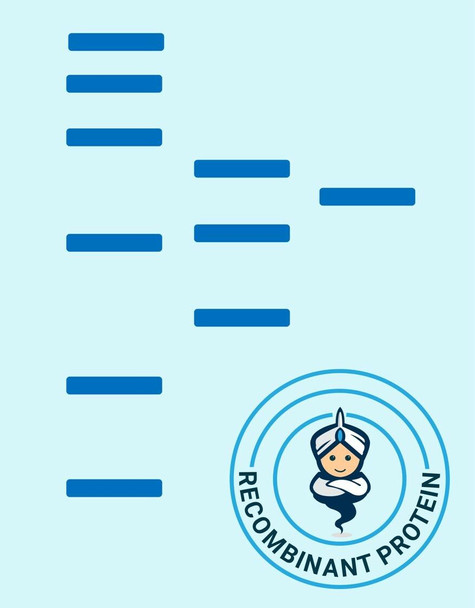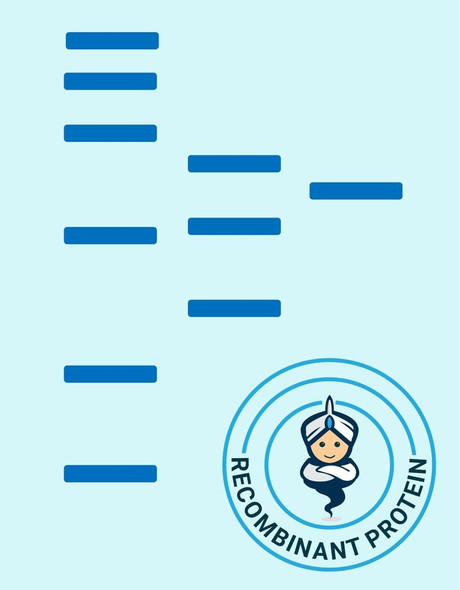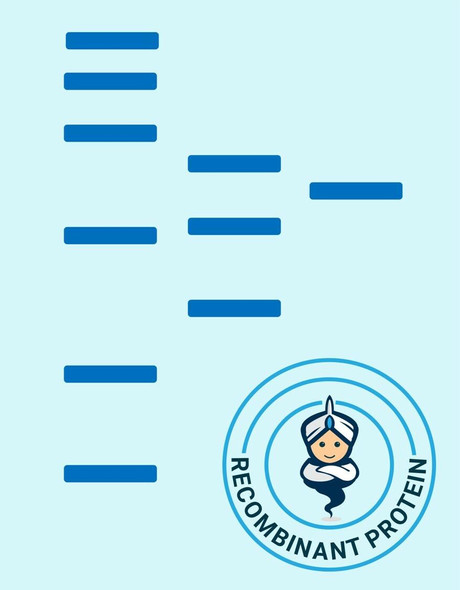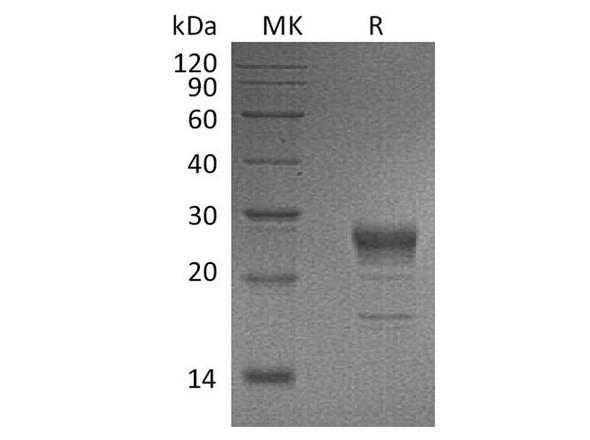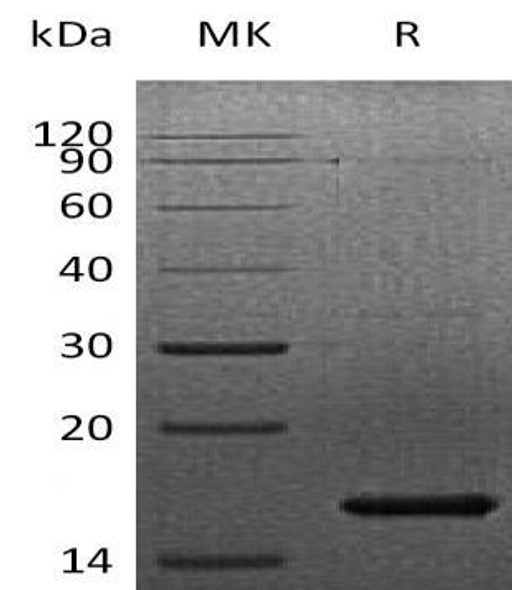Growth Factors & Cytokines Recombinant Proteins
Human KGF Recombinant Protein (RPPB0697)
- SKU:
- RPPB0697
- Product Type:
- Recombinant Protein
- Species:
- Human
- Uniprot:
- P21781
- Research Area:
- Growth Factors & Cytokines
Description
| Product Name: | Human KGF Recombinant Protein |
| Product Code: | RPPB0697 |
| Size: | 10µg |
| Species: | Human |
| Target: | KGF |
| Synonyms: | HBGF-7, FGF7, FGF-7, KGF. |
| Source: | HEK293 Cells |
| Physical Appearance: | Sterile Filtered White lyophilized (freeze-dried) powder. |
| Formulation: | The KGF was lyophilized from 1mg/ml in 1xPBS. |
| Solubility: | It is recommended to reconstitute the lyophilized KGF in sterile water not less than 100�g/ml, which can then be further diluted to other aqueous solutions. |
| Stability: | Lyophilized KGF although stable at room temperature for 3 weeks, should be stored desiccated below -18°C. Upon reconstitution KGF should be stored at 4°C between 2-7 days and for future use below -18°C.For long term storage it is recommended to add a carrier protein (0.1% HSA or BSA).Please prevent freeze-thaw cycles. |
| Purity: | Greater than 95% as obsereved by SDS-PAGE. |
| Biological Activity: | The specific activity was determined by the dose-dependent stimulation of the proliferation of 4MBr-5 cells (monkey epithelial cell line) and is typically 1.5-7.5ng/ml corresponding to a Specific Activity of 133,334-666,667IU/mg. |
KGF is a member of the fibroblast growth factor (FGF) family. FGF family members possess broad mitogenic and cell survival activities, and are involved in a variety of biological processes, including embryonic development, cell growth, morphogenesis, tissue repair, tumor growth and invasion. FGF7 is a potent epithelial cell-specific growth factor, whose mitogenic activity is predominantly exhibited in keratinocytes but not in fibroblasts and endothelial cells. Studies of mouse and rat homologs of this gene implicated roles in morphogenesis of epithelium, reepithelialization of wounds, hair development and early lung organogenesis.
KGF Human Recombinant produced in HEK cells is a glycosylated monomer, having a molecular weight range of 17-30kDa due to glycosylation.The KGF is purified by proprietary chromatographic techniques.
| UniProt Protein Function: | FGF7: Plays an important role in the regulation of embryonic development, cell proliferation and cell differentiation. Required for normal branching morphogenesis. Growth factor active on keratinocytes. Possible major paracrine effector of normal epithelial cell proliferation. Belongs to the heparin-binding growth factors family. |
| UniProt Protein Details: | Protein type:Secreted, signal peptide; Secreted; Cytokine Chromosomal Location of Human Ortholog: 15q21.2 Cellular Component: Golgi apparatus; extracellular region Molecular Function:heparin binding; protein binding; growth factor activity; fibroblast growth factor receptor binding; chemoattractant activity Biological Process: epidermal growth factor receptor signaling pathway; positive regulation of keratinocyte migration; epidermis development; fibroblast growth factor receptor signaling pathway; hair follicle morphogenesis; phosphoinositide-mediated signaling; nerve growth factor receptor signaling pathway; mesenchymal cell proliferation; signal transduction; positive regulation of peptidyl-tyrosine phosphorylation; positive chemotaxis; positive regulation of cell division; positive regulation of cell proliferation; actin cytoskeleton reorganization; insulin receptor signaling pathway; response to wounding; innate immune response; positive regulation of epithelial cell proliferation |
| NCBI Summary: | The protein encoded by this gene is a member of the fibroblast growth factor (FGF) family. FGF family members possess broad mitogenic and cell survival activities, and are involved in a variety of biological processes, including embryonic development, cell growth, morphogenesis, tissue repair, tumor growth and invasion. This protein is a potent epithelial cell-specific growth factor, whose mitogenic activity is predominantly exhibited in keratinocytes but not in fibroblasts and endothelial cells. Studies of mouse and rat homologs of this gene implicated roles in morphogenesis of epithelium, reepithelialization of wounds, hair development and early lung organogenesis. [provided by RefSeq, Jul 2008] |
| UniProt Code: | P21781 |
| NCBI GenInfo Identifier: | 122756 |
| NCBI Gene ID: | 2252 |
| NCBI Accession: | P21781.1 |
| UniProt Secondary Accession: | P21781,Q6FGV5, Q96FG5, H0YNY5, |
| UniProt Related Accession: | P21781 |
| Molecular Weight: | 11,520 Da |
| NCBI Full Name: | Fibroblast growth factor 7 |
| NCBI Synonym Full Names: | fibroblast growth factor 7 |
| NCBI Official Symbol: | FGF7�� |
| NCBI Official Synonym Symbols: | KGF; HBGF-7�� |
| NCBI Protein Information: | fibroblast growth factor 7; FGF-7; keratinocyte growth factor; heparin-binding growth factor 7 |
| UniProt Protein Name: | Fibroblast growth factor 7 |
| UniProt Synonym Protein Names: | Heparin-binding growth factor 7; HBGF-7; Keratinocyte growth factor |
| UniProt Gene Name: | FGF7�� |
| UniProt Entry Name: | FGF7_HUMAN |

